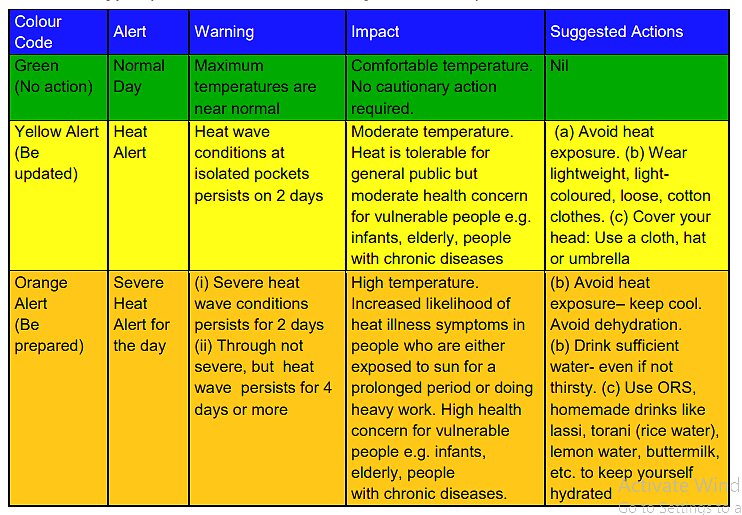
views
As heatwave blisters large swathes of India, the Indian Meteorological Department (IMD) issued an ‘orange alert’ for the next four days for Rajasthan, Madhya Pradesh, and the Vidarbha region of Maharashtra. But what do these colour codes mean? And how are they decided upon? News18 explains:

First, Let’s Understand WHY Colour-Coded Weather Warnings are Used
It’s issued by the IMD, and its goal is to warn people ahead of severe or dangerous weather that could cause property damage, significant disruption, or even death. The warnings are updated on a daily basis.
“Colour codes are used in weather warnings for bringing out the severity of the weather phenomena expected. The key idea is to forewarn relevant officials and the disaster management authority about the impact of the weather expected so as to keep them ready for necessary action related to disaster risk reduction”.

A Look At IMD’s Various Colour Codes & What They Mean!

No advisory is issued in the event of a green colour code. This means all weather phenomena is, to the most extent, usual.

The colour yellow denotes severely bad weather that will last for several days. It also implies that the weather could deteriorate, causing disturbance in daily routines.

The orange alert is issued as a warning of extremely bad weather that could cause commute disruptions, including road and rail closures, as well as power outages.

The red alert is issued when extremely bad weather conditions are likely to interrupt travel and power, posing a considerable danger of death.

How Are the Colour Codes Decided?
The colour of weather situations is determined by a unique matrix, according to IMD. It is based on the “probability of the event occurring as well as an appraisal of its impact.” The colour choice is also influenced by the risk indicators such as meteorological, hydrological, and geophysical elements.

Application of Colour Codes May Vary
“Even if all the centres’ colour code criteria are the identical,” IMD notes, “the colour code used for subdivisional warning does not have to be the same as the colour code used for any district in that subdivision.” This is due to the fact that the criteria are of a generic character, although the weather activity and influence may vary depending on the region.

And Lastly, a Look at IMD’s Impact-based Colour Assessment for Heatwaves
While these colour-coded alerts are universal in nature and are also issued during floods, the IMD, as described above, has an impact-based assessment criteria specially catered for heatwaves.
This chart, provided by the IMD, gives an insight:

Image credits: Shutterstock, IMD
Read all the Latest India News here



















Comments
0 comment